Story and photos by Clyde Berryman
This installment of the Clyde Berryman Grand Prix Dioramas deals with the French Grand Prix. Above, a scene from the 1957 French GP (Rouen les Essarts) – A Commissaire and his dog survey the action at Nouveau Monde hairpin.
1953 French GP – Reims-Gueux (Scale: 1-160 or N-Scale)
1953 was the second year in succession that the World Driving Championship was run to Formula Two (F.2) specifications due to a shortage of manufacturers being able to produce a varied grid of F.1 cars. The Ferrari 500 F.2 and Alberto Ascari had dominated in 1952 and would win the title again in 1953 but Juan-Manuel Fangio in the Maserati was now much more competitive.
The 1953 French GP, however, was the race in which Englishman Mike Hawthorn established himself as a new front-runner when he won in his Ferrari 500 after a major race-end slipstreaming duel with Fangio. That is the scene depicted in this diorama with the two of them going around Thillois corner with Ascari trailing in third place. The small building in the background, a modified N-scale plastic kit, is the ‘Auberge de la Garenne’, an iconic restaurant and inn which still stands in the same place to this day.
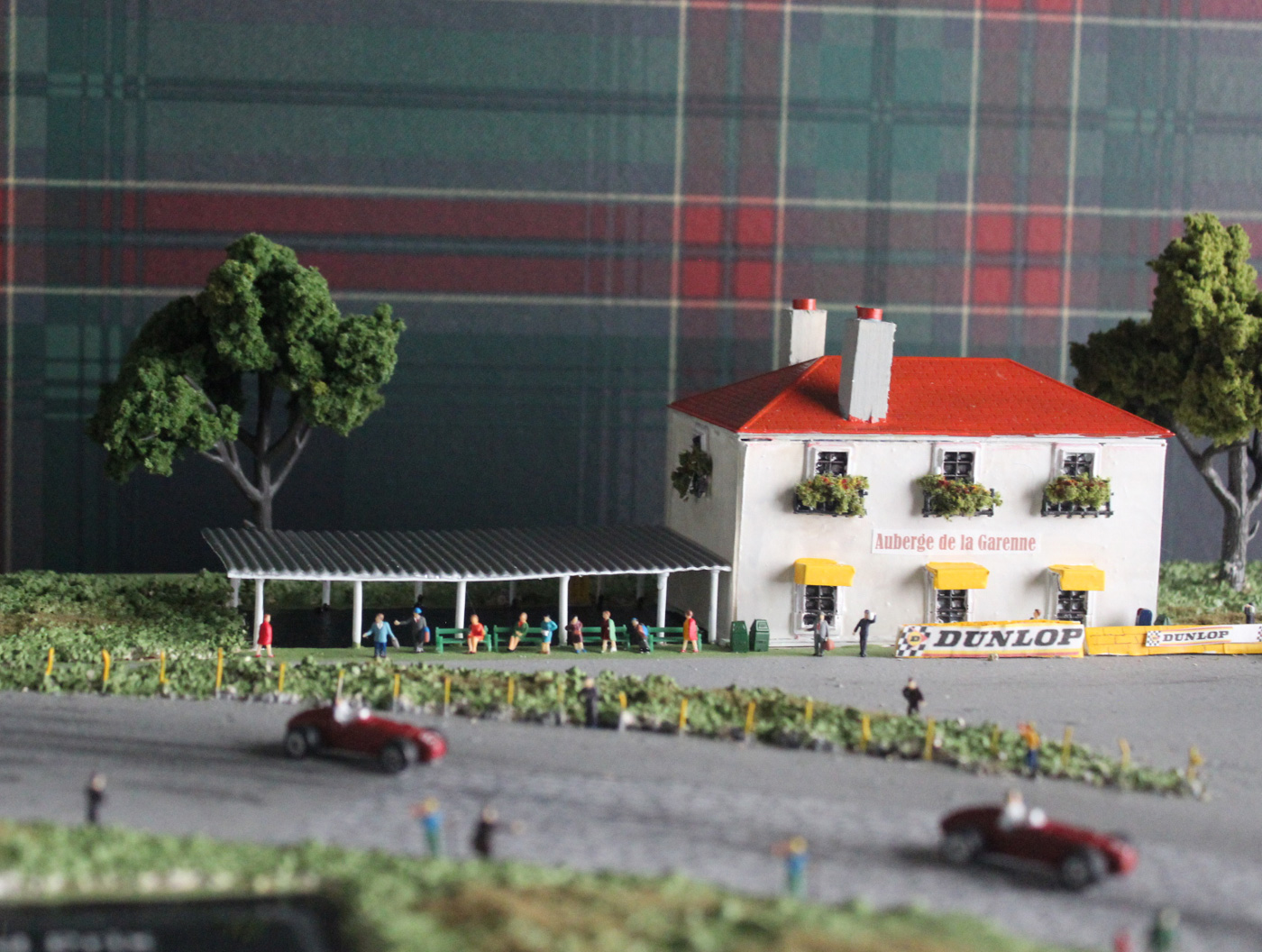
1953 French GP (Reims) – Spectators at the Auberge de la Garenne watch the action through Thillois corner.
1957 French GP – Rouen-les-Essarts (Scale: 1-43)
I chose to do this diorama mainly because I had several Lancia-Ferrari 801 diecast models on hand and this race, near the midpoint in the 1957 season, was another Juan-Manuel Fangio win in his Maserati 250F on his way to securing his fifth and final World Championship title. This would be one of the last seasons in which the front-engine roadsters would not be threatened by the nimble, rear-engine Coopers that were beginning to make their appearance felt. The scene here is Nouveau Monde (‘New World’) at the Southern extremity of the circuit, which follows a long set of sweeping acrobatic curves going downhill before the cars have to brake for the hairpin, with the added challenge of a cobblestone apex which can play havoc with tire grip. There are steep, forest-covered embankments on either side of this curve which provide natural vantage points for spectators, so this too had to be a part of the diorama. Here, Juan-Manuel Fangio has already rounded the corner and is in full acceleration followed by Luigi Musso (Lancia-Ferrari 801), Jean Behra (Maserati 250F), Peter Collins (Lancia-Ferrari 801) and Harry Schell (Maserati 250F). Mike Hawthorn (Lancia-Ferrari 801) is struggling to keep pace with the leaders while Stuart Lewis-Evans (Vanwall) has been lapped.
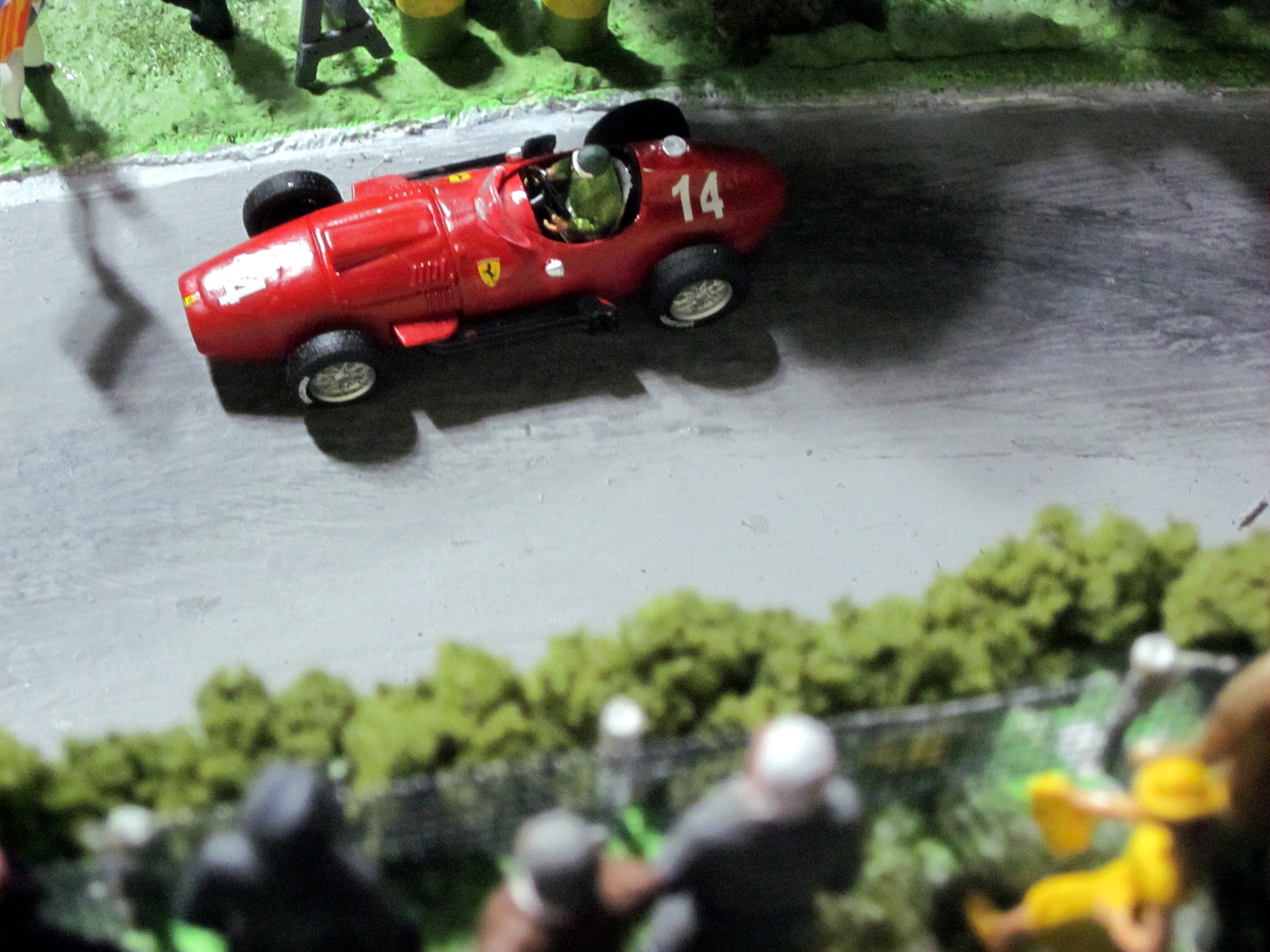
1957 French GP (Rouen les Essarts) – Mike Hawthorn (Lancia-Ferrari 801) with handling issues that day.
1958 French GP – Reims-Gueux (Scale: 1-43
The ‘Circuit Routier de Reims-Gueux’ consisted of long fast straights of public road coursing through agricultural fields (and at one time, the streets of the village of Gueux) just outside the city of Reims, the champagne capital of France. It had initially been home to the Marne Grand Prix in the mid-late 1920’s before the Grand Prix de l’Automobile Club de France (ACF) became its premier event. I had the opportunity of visiting the deteriorating structures of this once-great circuit in the early-2000’s and it was sad to see the dilapidated state of the buildings, its grandstands covered in graffiti and tall grass growing in the pit boxes. Real-estate developers were eyeing this valuable land so close to Reims and there was no reason to expect this monument to French motor racing history would not get bulldozed soon, as had happened shortly before with the circuit buildings at Rouen-les-Essarts. When a group of volunteer enthusiasts (‘Les Amis du Circuit de Gueux’) began restoring the control tower, pits and grandstands to pristine condition, everything changed. No one had the heart to destroy their work and the venue is used to this day for periodic events – mostly automotive in nature as one could expect.
I was moved by this turnaround of events and decided to build my own large diorama. I chose the 1958 French GP because almost the entire starting grid of F.1 car manufacturers / models were available in 1-43 die cast scale. The race was won brilliantly by Mike Hawthorn (Ferrari-Dino 246) on his way to the 1958 World Championship title but it tragically also witnessed the fatal accident of his Italian teammate, Luigi Musso. It also ended up being Juan-Manuel Fangio’s last F.1 Grand Prix race in a Maserati 250F.
I used mostly wood, cardboard, paper, styrene plastic, and nails for the main control tower structure. I generally make significant use of the internet in researching period advertisements as seen on photographs, and re-size these or make new ones from scratch with the computer, subsequently painted and ‘aged’ before they are applied to billboards or buildings. The scene depicted here is right after the race start has taken place. Harry Schell (BRM P25) has gotten a terrific but short-lived lead over the Ferraris. I used stretched-cotton with glue and paint to create the wheel spin ‘smoke’ behind the tires of the cars accelerating away from the starting grid. The starting grid circuit markings show that Reims was also used at this time for sports-car endurance racing with a ‘Le Mans’ style start requiring the drivers to run from the opposite side of the track and leap into their parked cars.
Previous stories:
Grand Prix Dioramas, Introduction
Grand Prix Dioramas, Tripoli
Next in the Diorama series: Monaco!
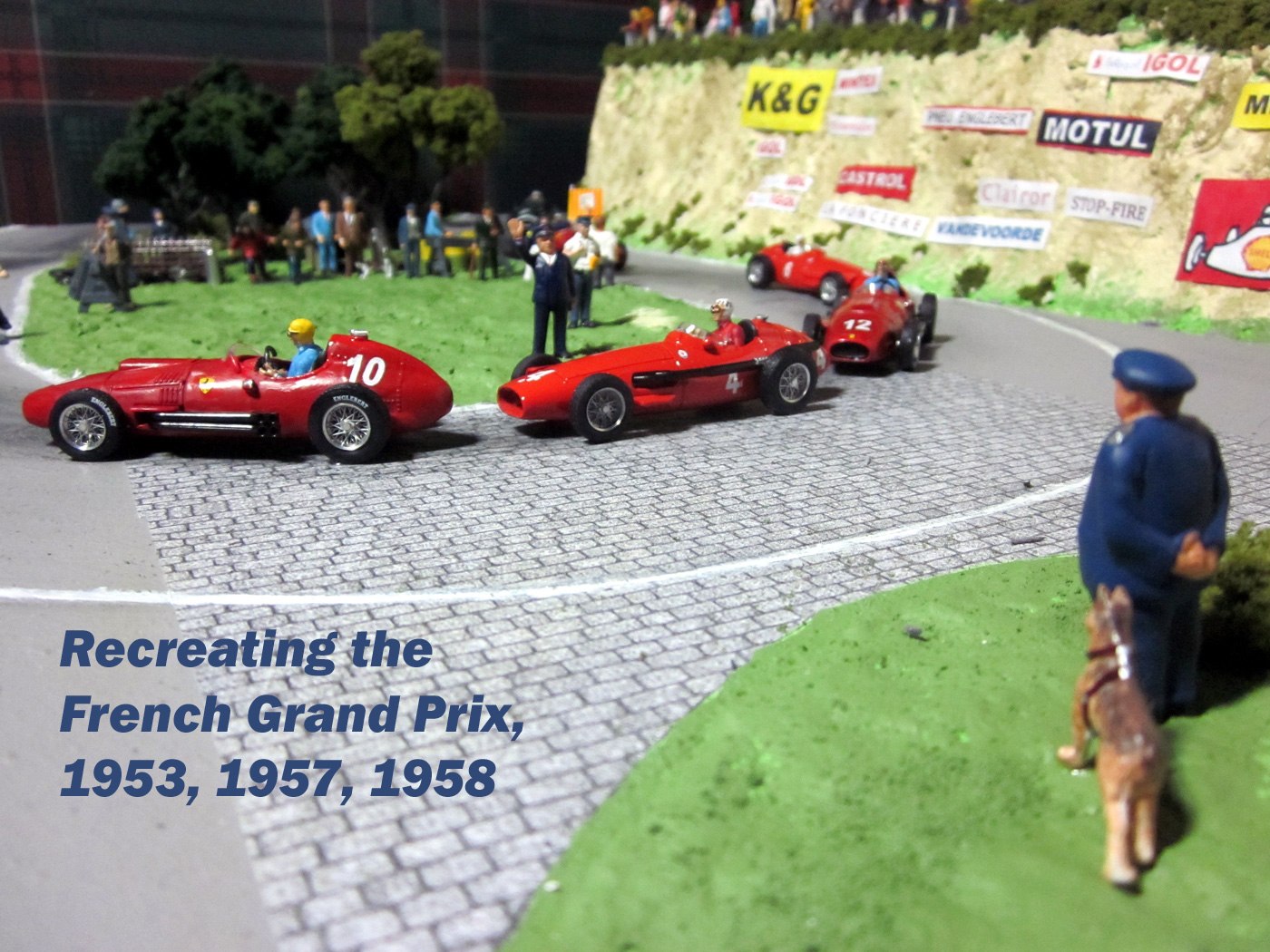
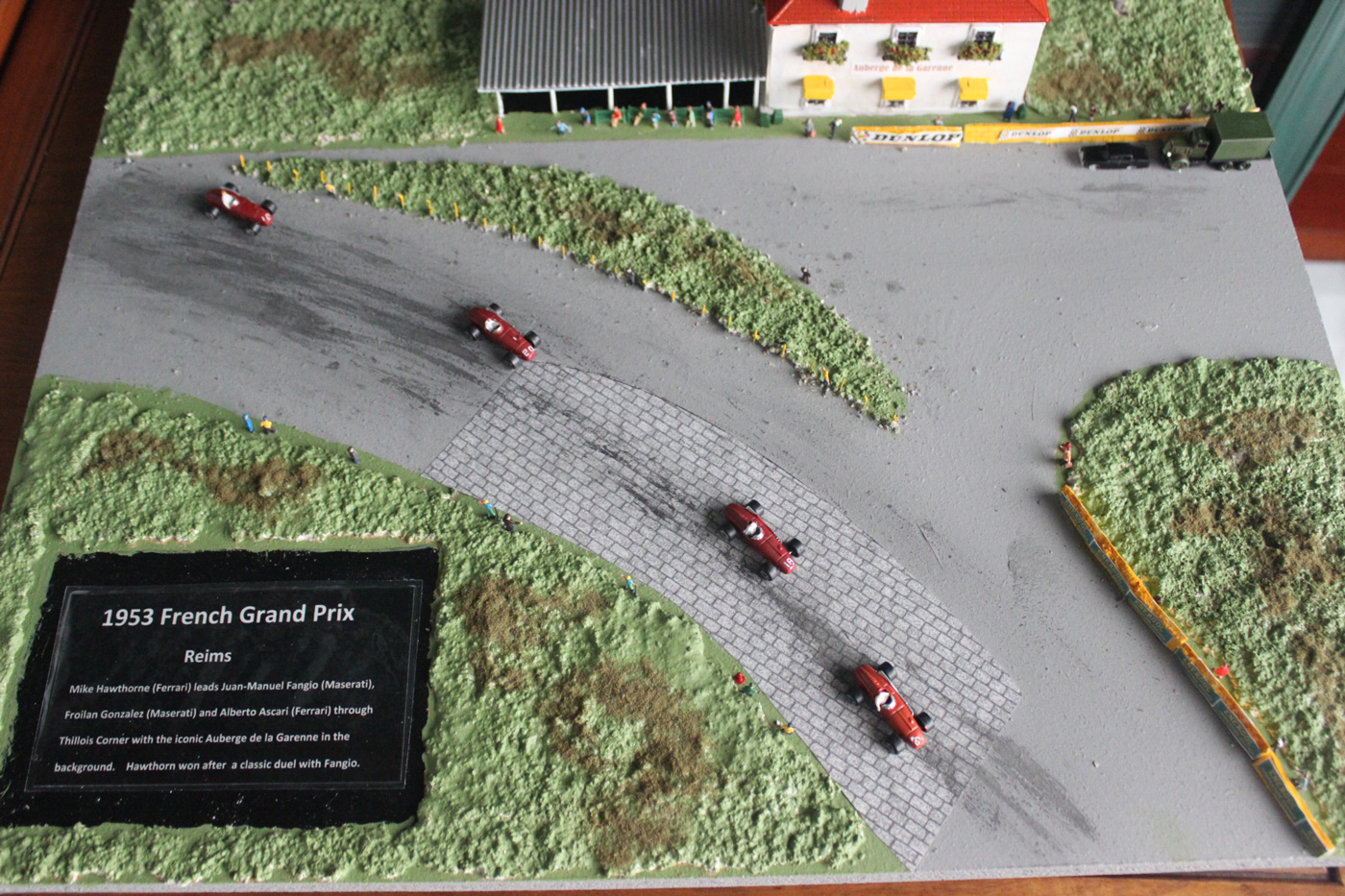
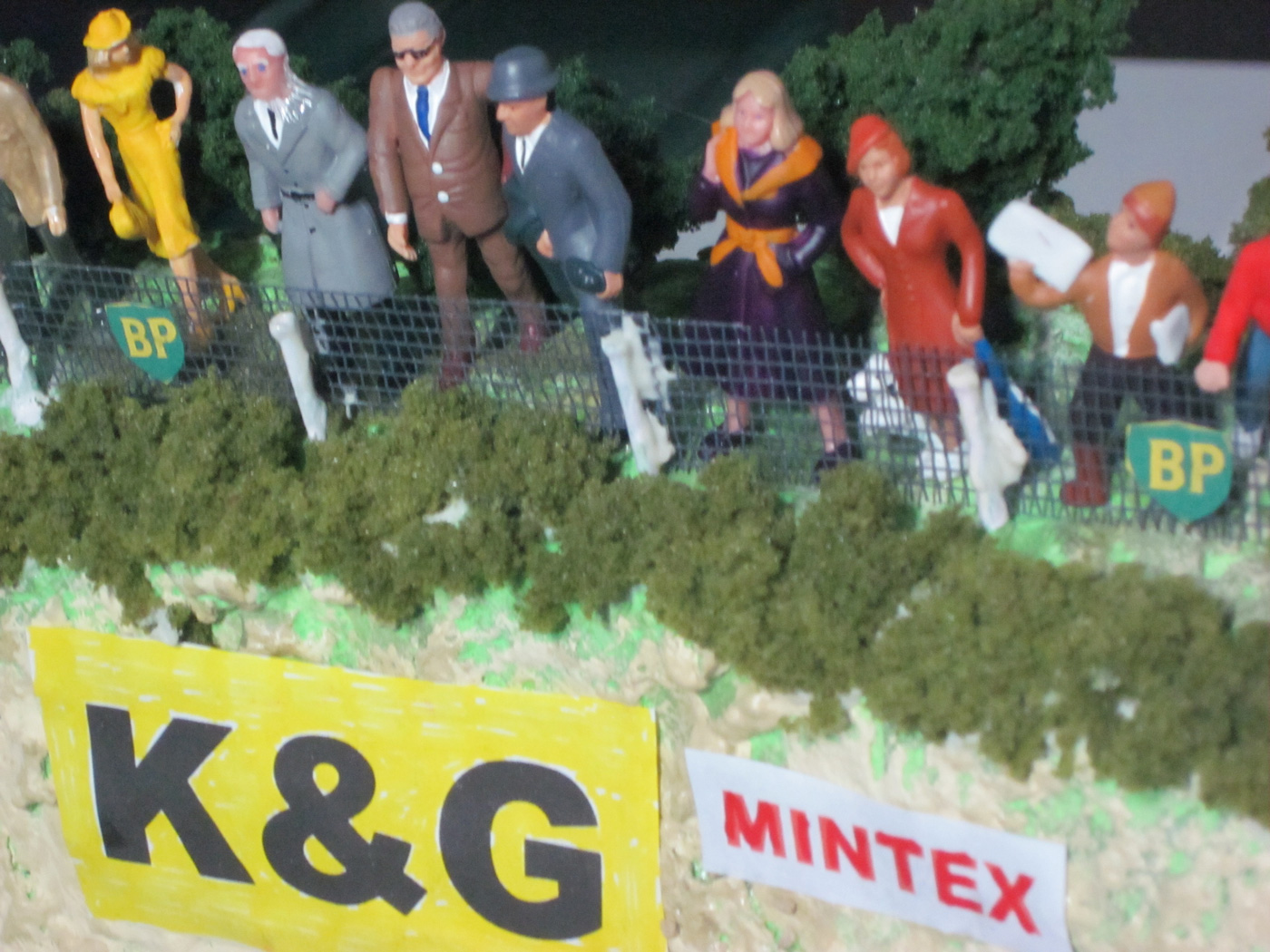
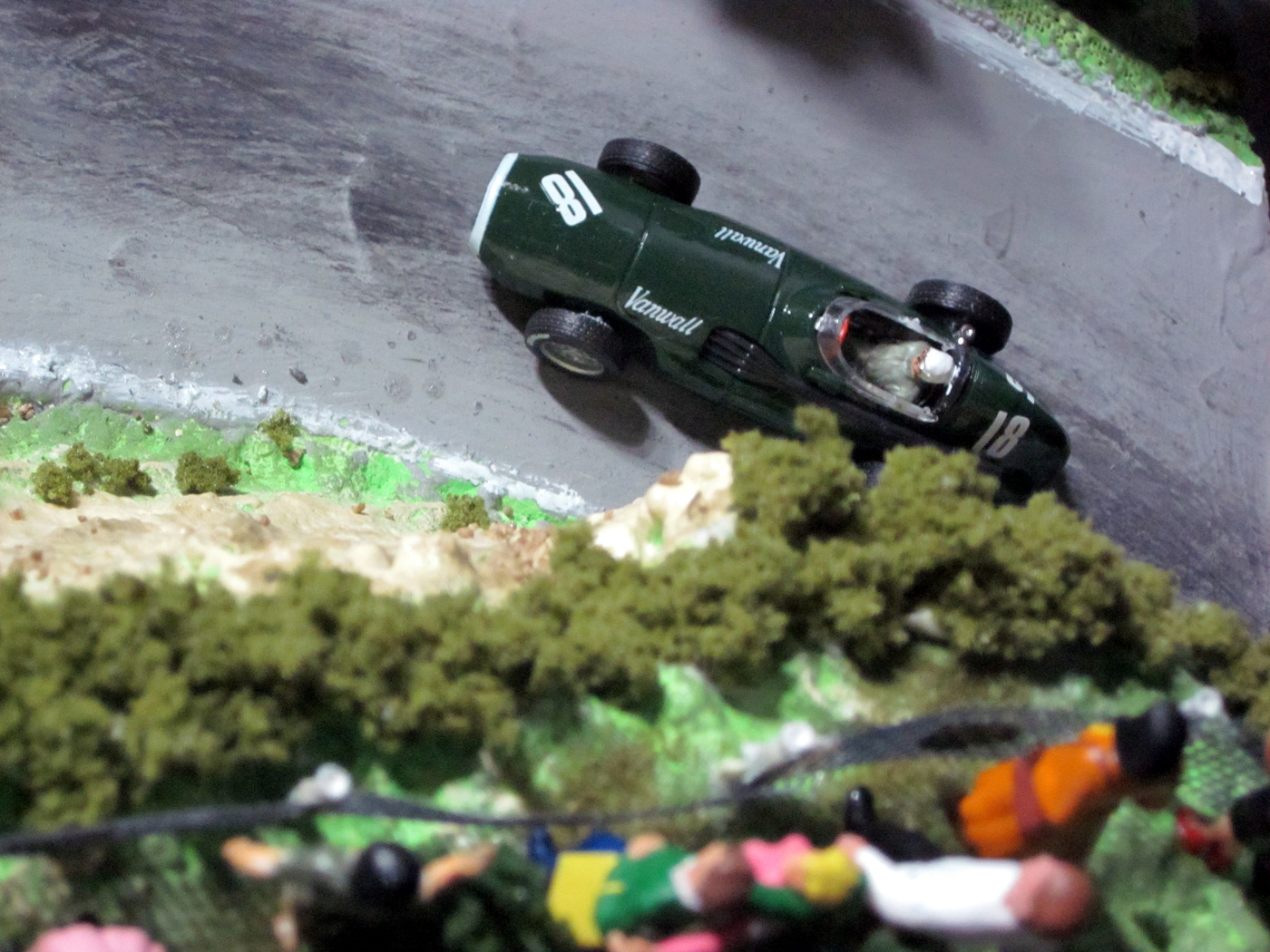
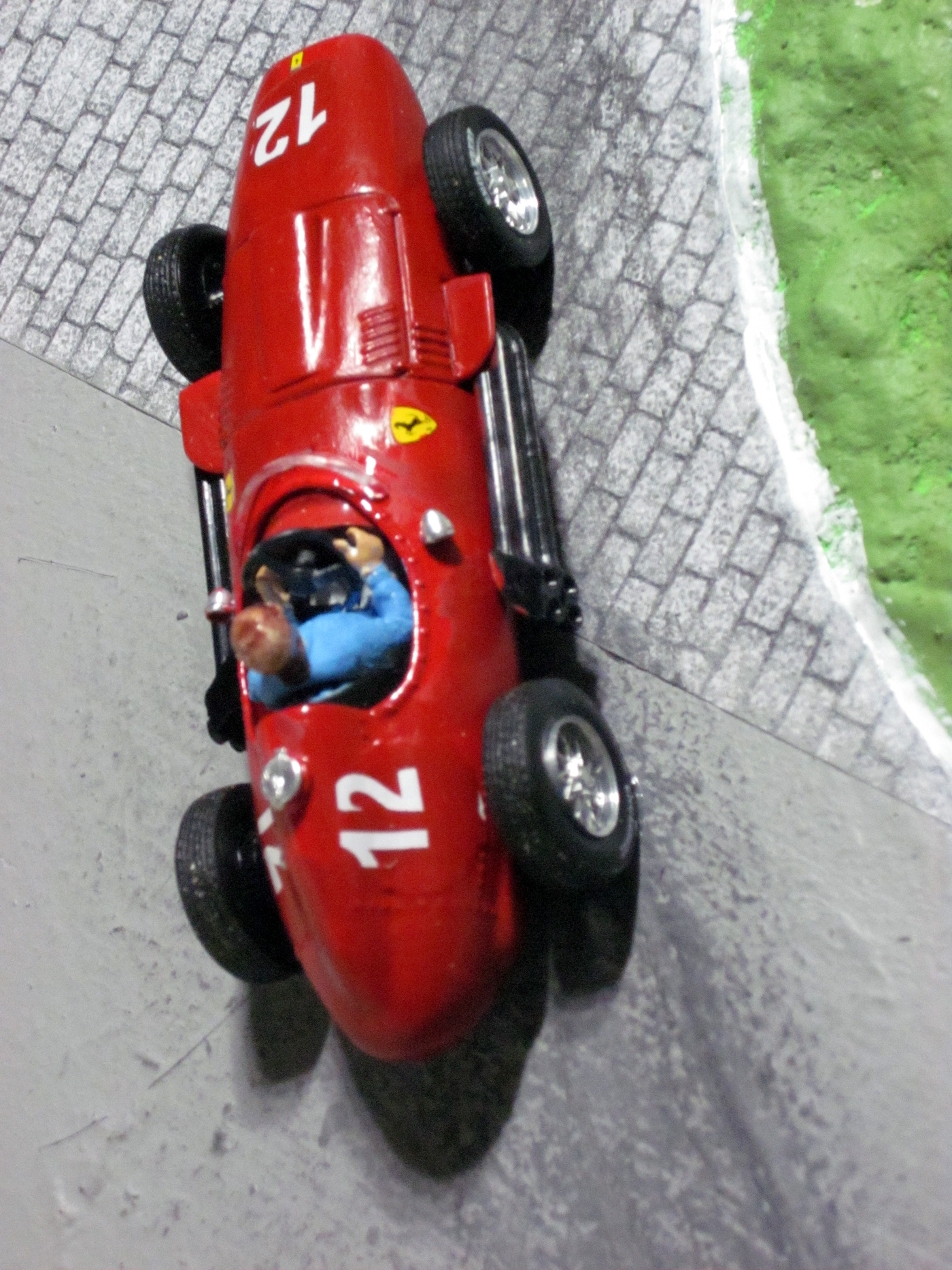
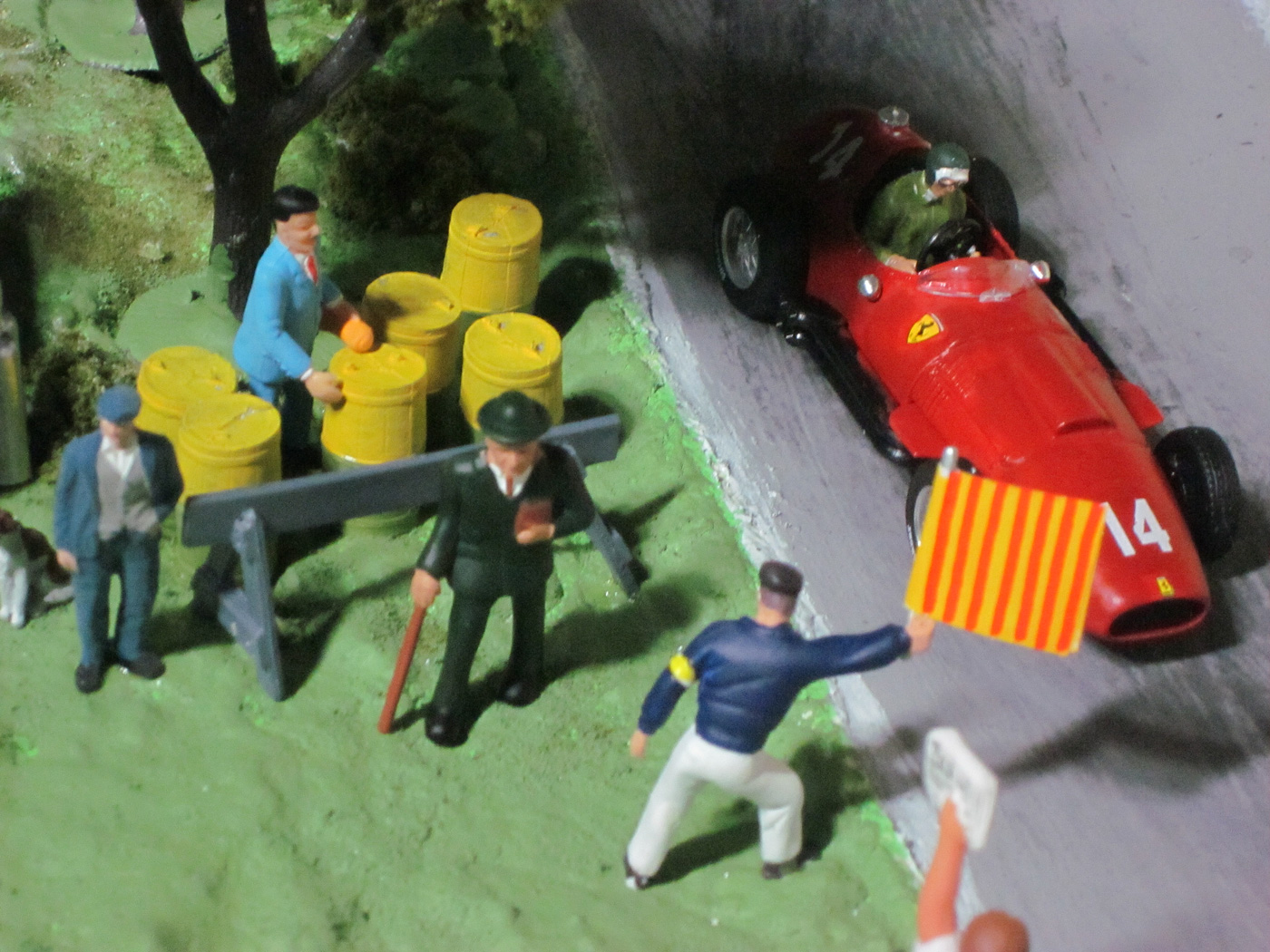
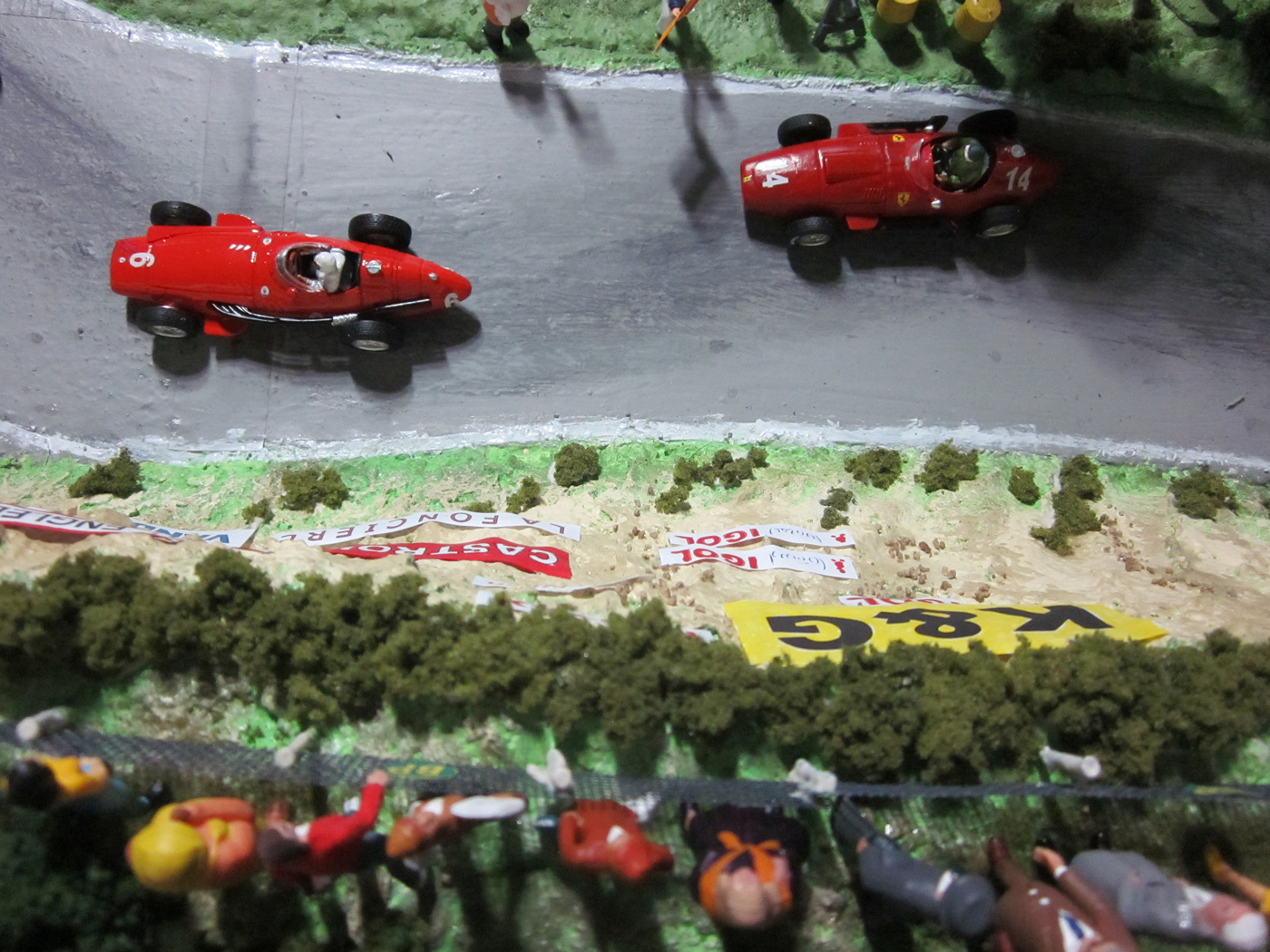
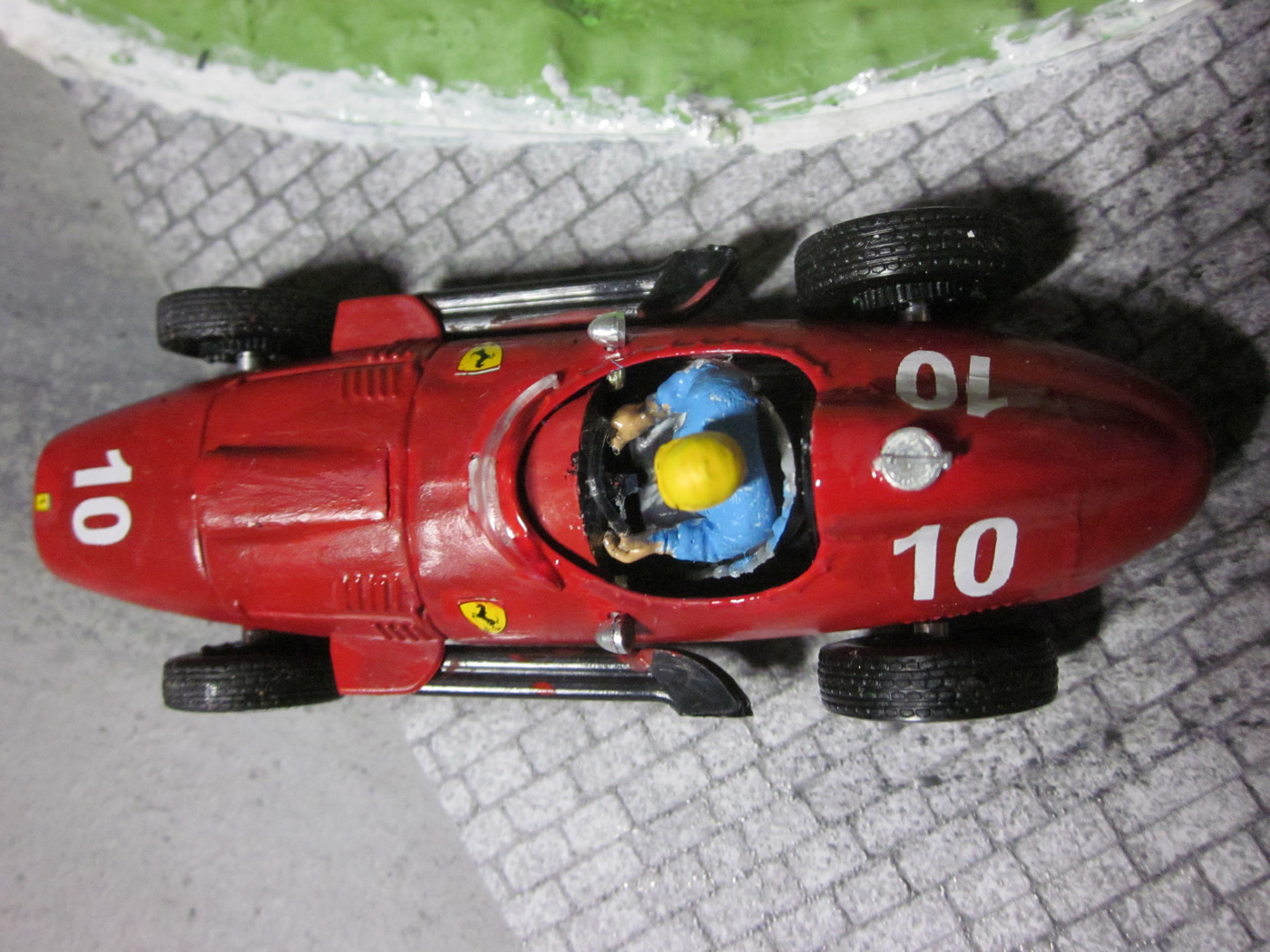
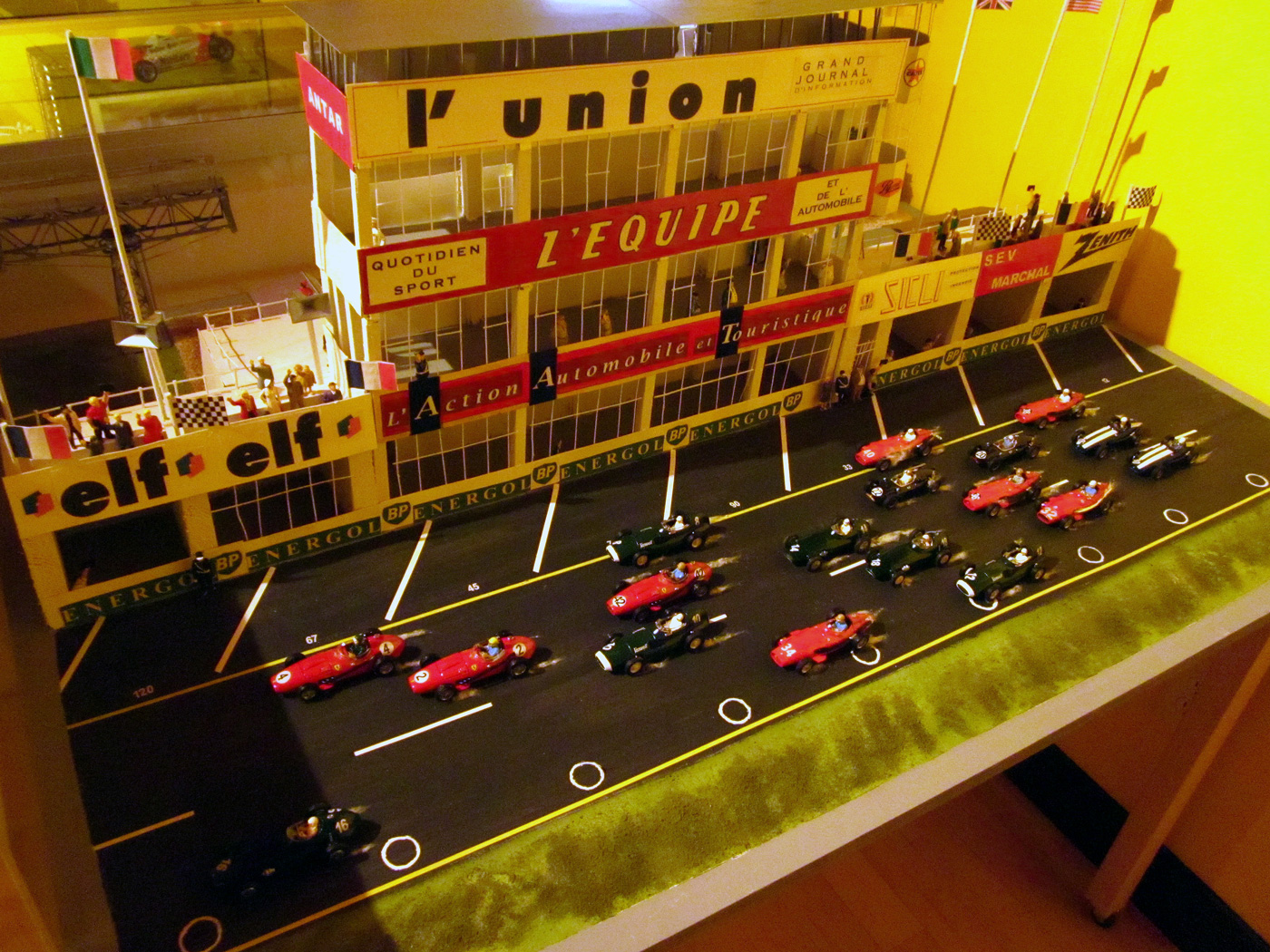
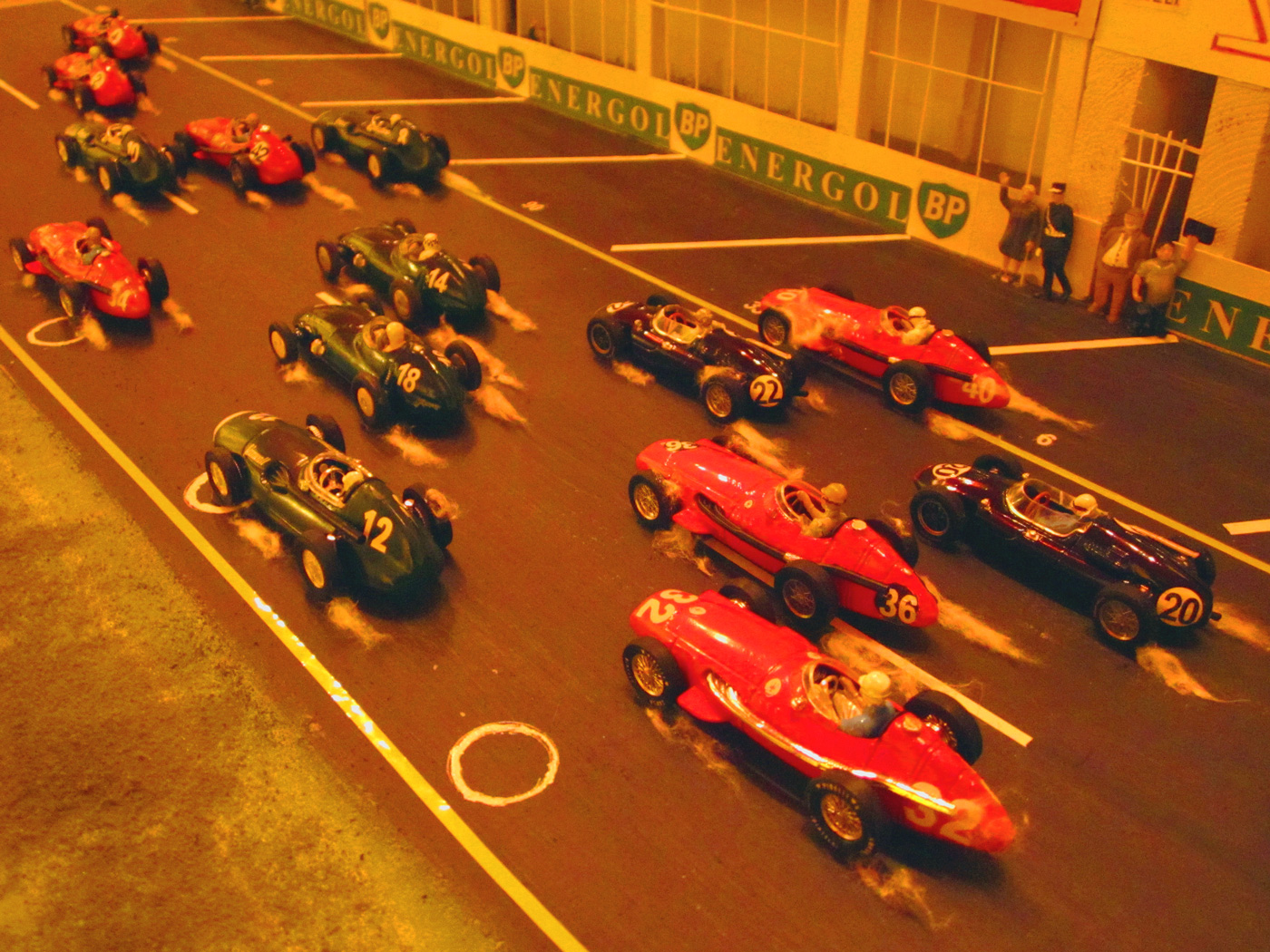
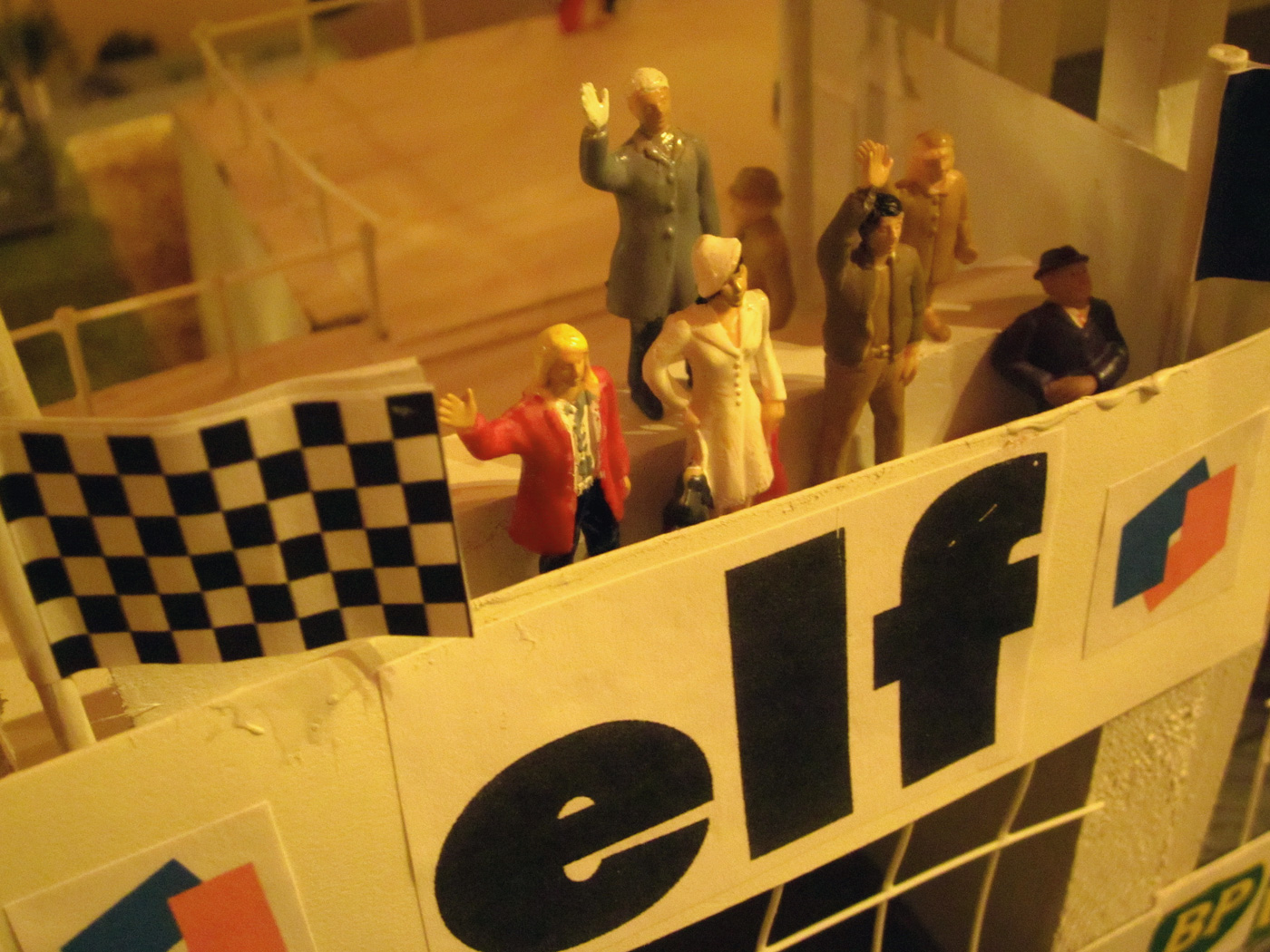
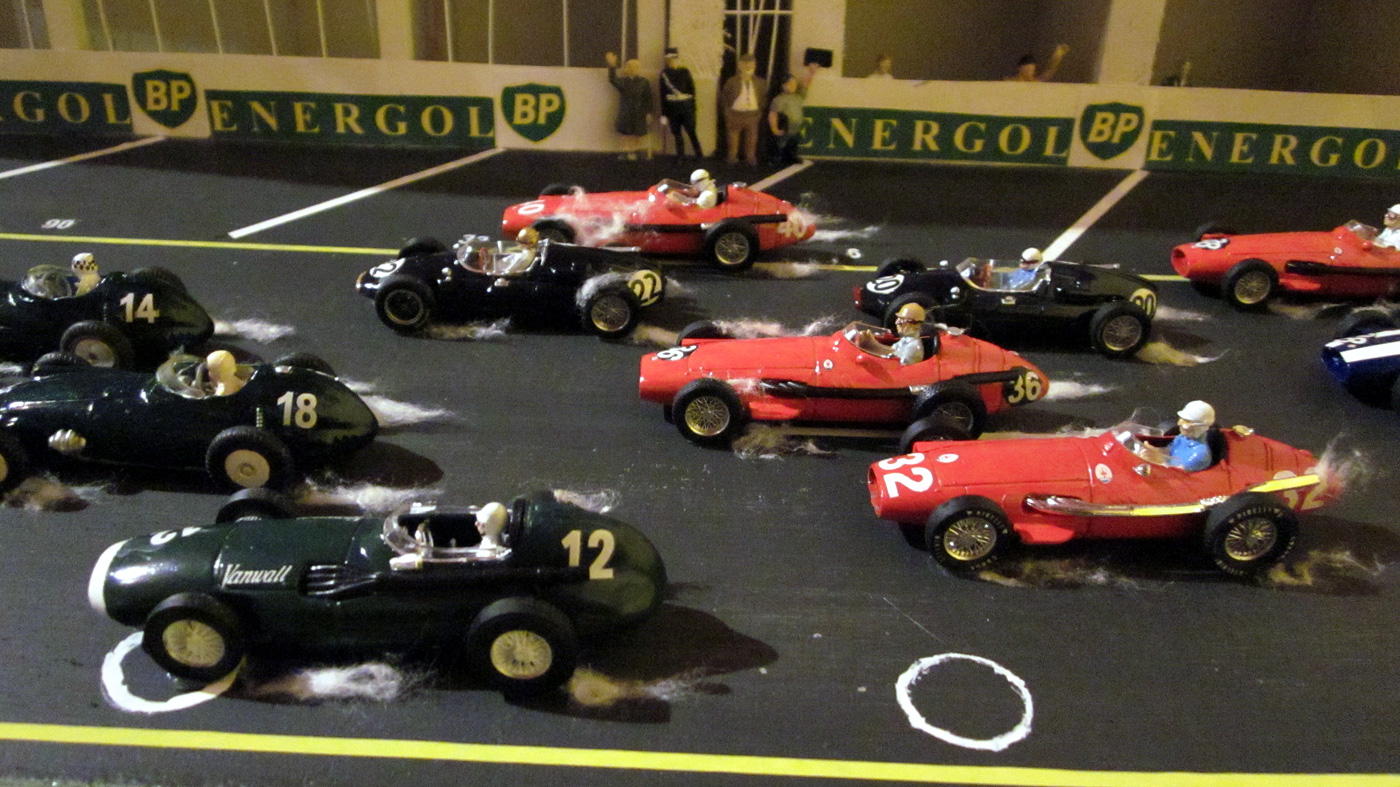
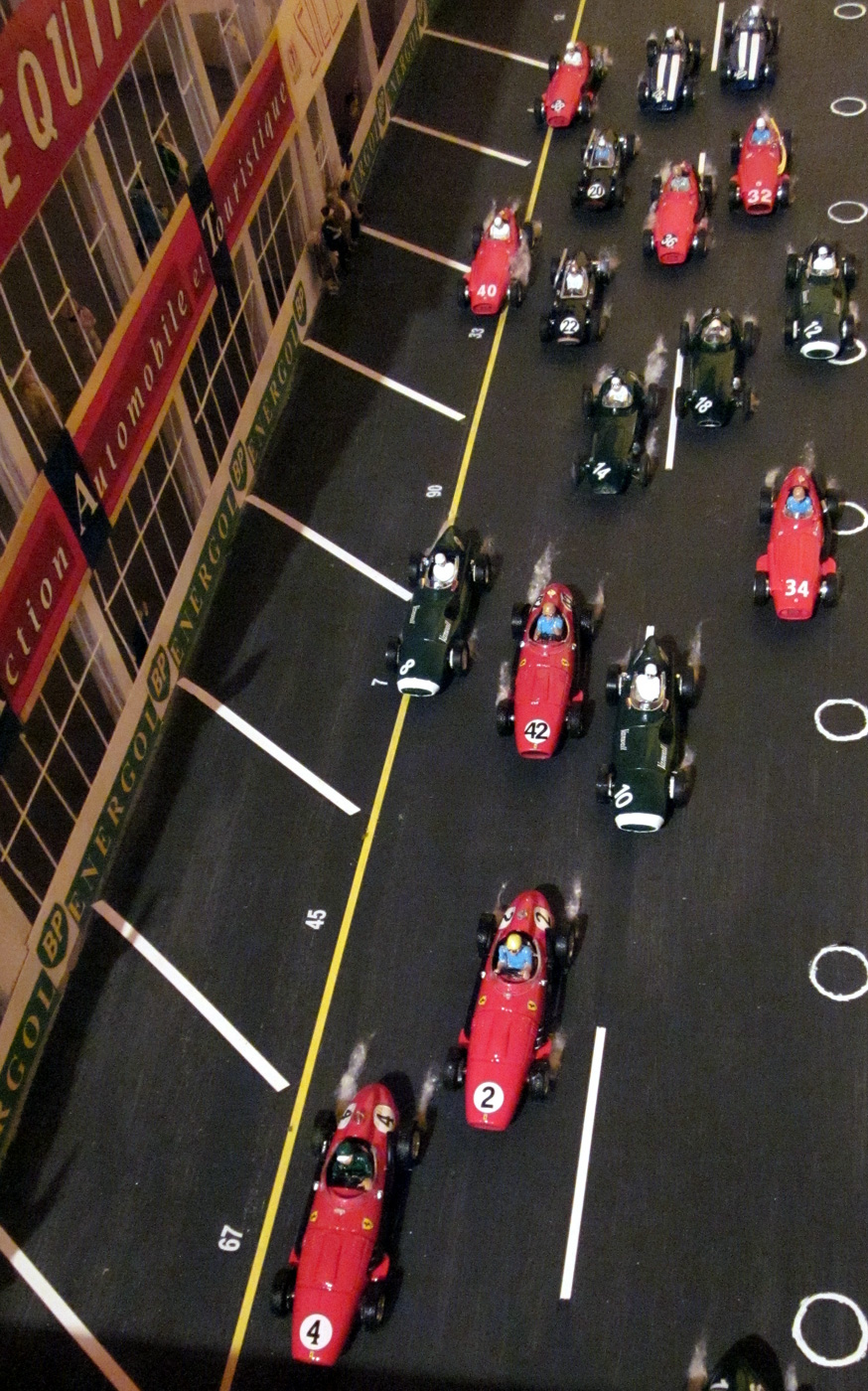
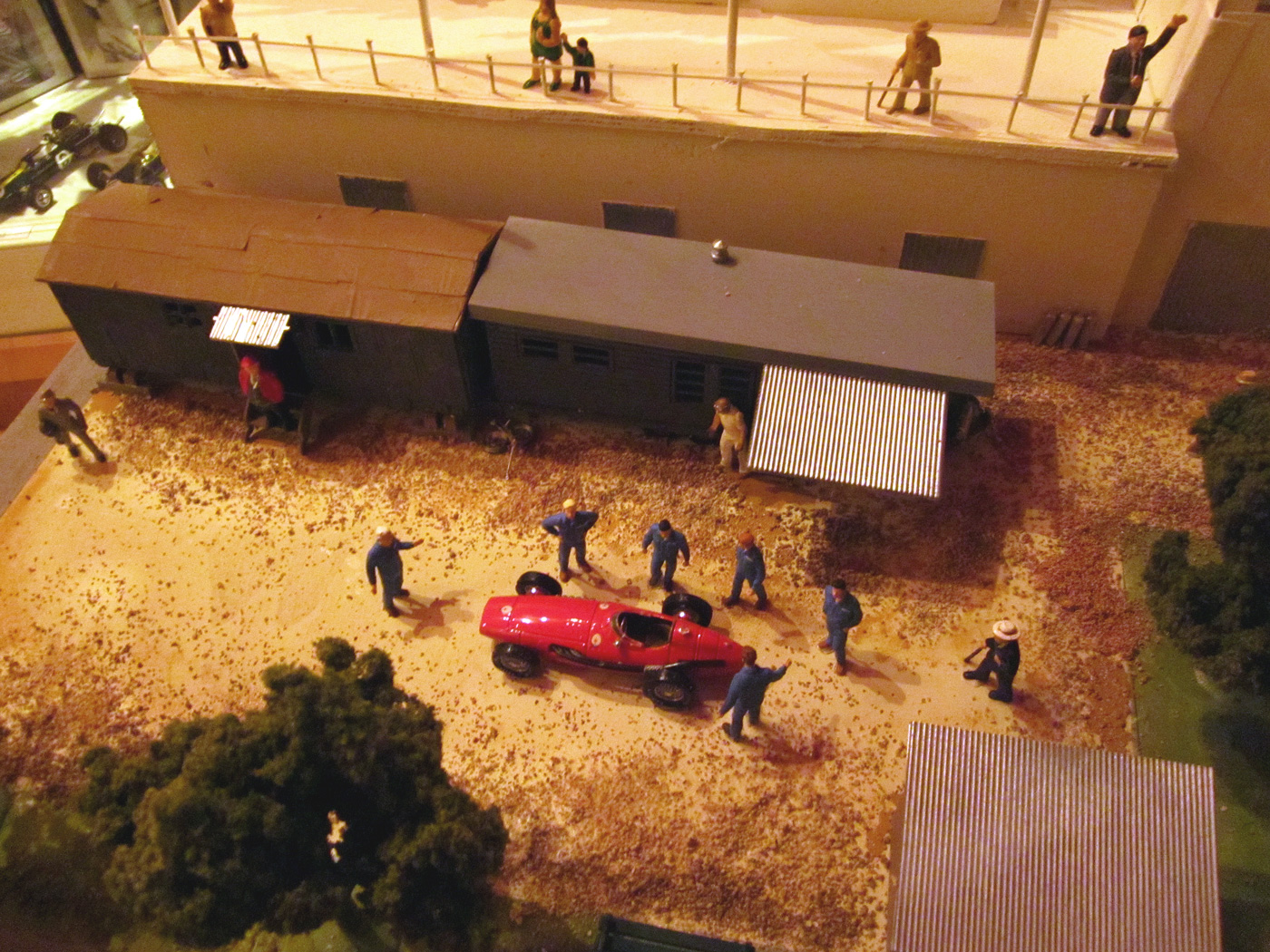
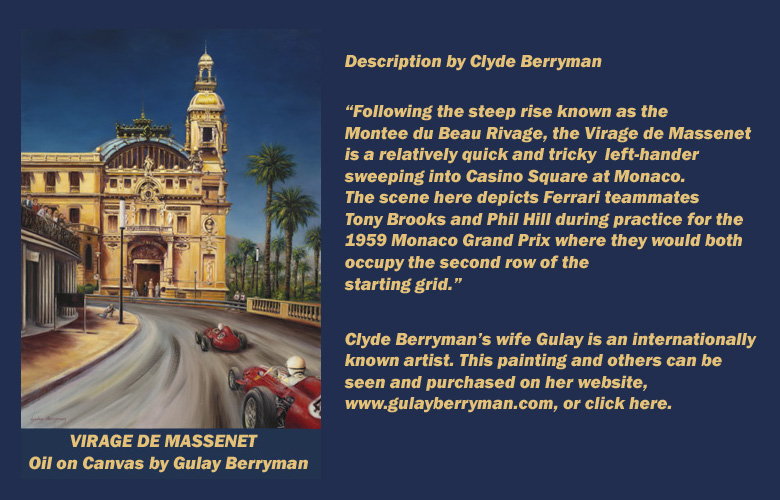
Superb modeling, so I hate to bring up this point: most of the models on the starting grid appear to have tire “smoke” coming from the front wheels. As there were, I believe, no front wheel drive cars in the race, shouldn’t the “smoke” be coming from only the rear wheels?
Fascinating those dioramas. They really bring back memories of Grand Prix racing in the Golden fifties. But what a patience and craftmanship to build such jewels. Congratulations!
Gijsbert-Paul Berk – Zwolle. The Netherlands
Craig, You’re absolutely right. Any front tire smoke would come from braking to avoid contact with the guy in front who did not get off to as fast a start as you did or the driver moving over on you…..but your point is well taken. I am guilty of having considerably ‘overcooked’ the brakes in my diorama re the amount of front tire smoke that would normally result from the jostling and adjustments that goes on in the chaos of a race start. I did this to try and breathe some life and inject motion and drama into an otherwise still diorama. The next time the ‘big lid’ comes off this diorama, I will be sure to peel away traces of front tire friction from all but maybe one or two cars….maybe replace a few ‘smokes’ with some asphalt pebbles instead…:)) Thanks for a very good observation!
Gijsbert-Paul, Thanks for your very kind words! Each one is a new unique project in which you are happy with some solutions you come up with and not so much with others that don’t work as well. Trial and error and you keep trying to improve upon and get smarter about how you tackle the next one!
Lovely recreation of by-gone events, but the elf advertising is slightly out of time, as the brand was created in 1967 and was instrumental in the successful development of French-made racing machinery from F3 to F1.
Correct Jean-Marc. At the time I began building the race control tower, I could not find a single photo which showed the complete front facade with all the advertising hoardings which were in place for the 1958 Grand Prix. Also, I would have had to guess the color of some of these ads based on the shade of black or gray. Instead, I settled on using the tower as it was restored by the Amis du Circuit de Gueux which is probably what it looked like in its final iteration…about the time the Elf brand came into being. It is an anachronism but my other choices were guesswork and there would have been flaws there too. Little by little, more vintage photos continue to appear and perhaps we will soon be able to re-construct exactly what the entire tower and pits looked like in 1958….and some ‘corrections’ to the diorama can be undertaken at that time!